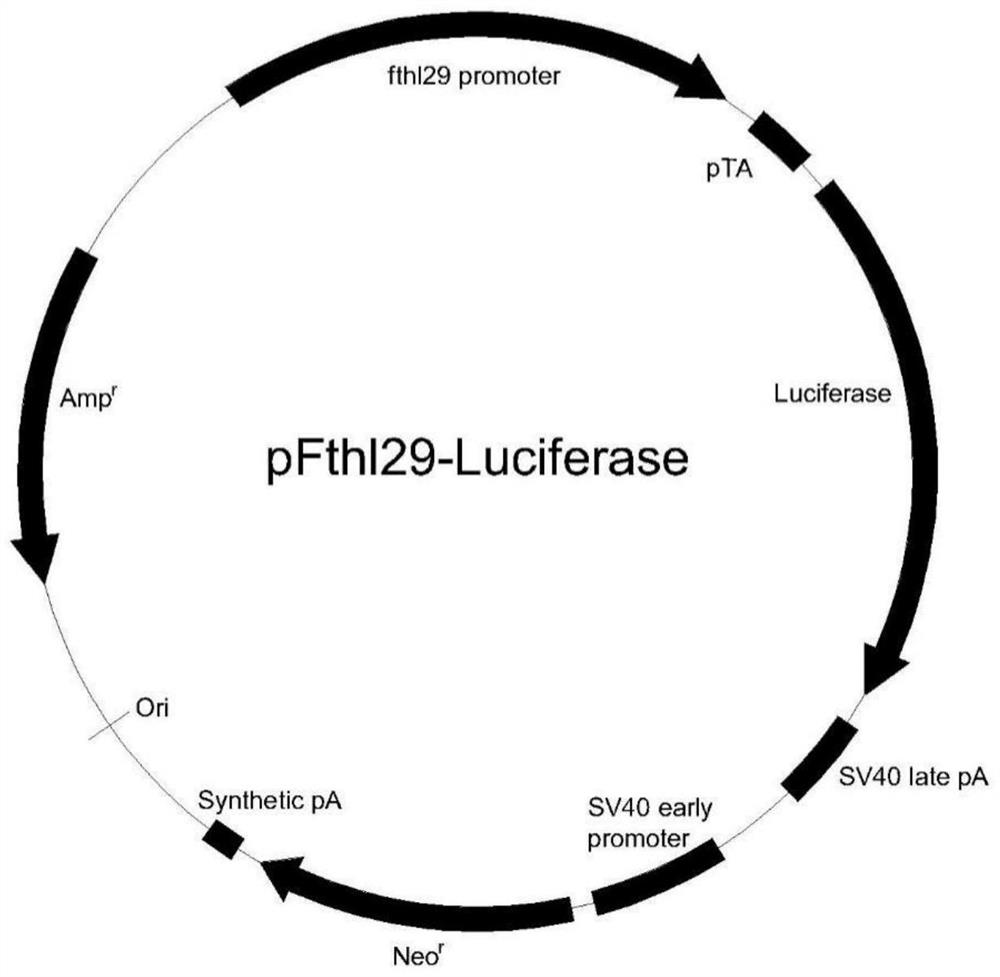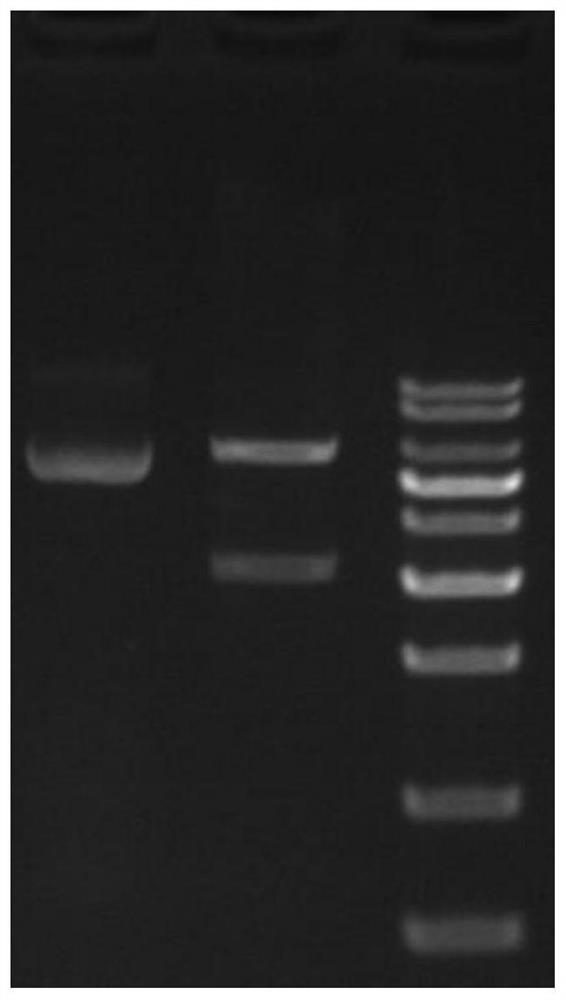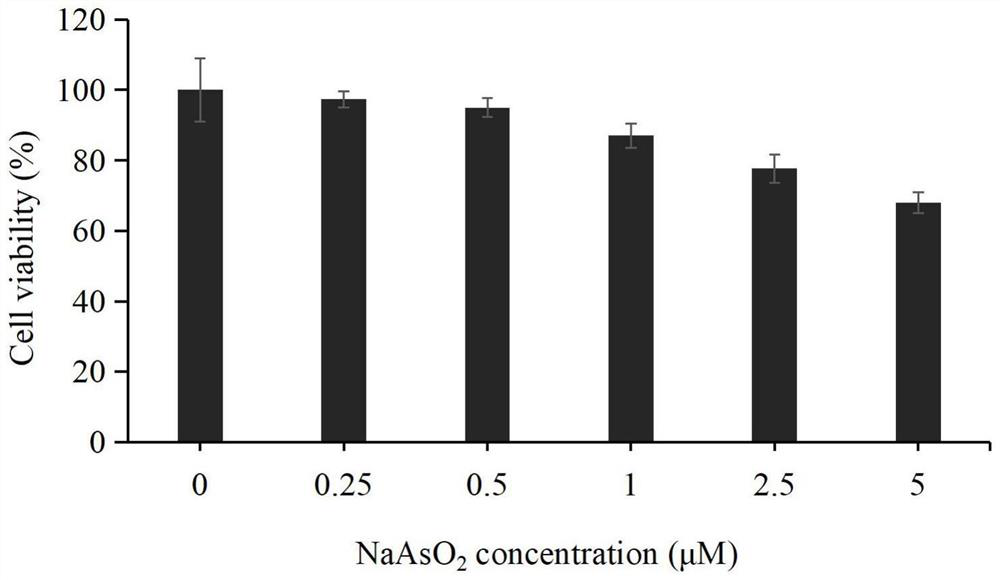Rapid cytotoxicity detection method based on luciferase reporter gene, construction method of cell strain and application of cell strain
A technology of luciferase and reporter gene, which is applied in biochemical equipment and methods, microbial determination/inspection, measuring devices, etc., can solve problems such as cell death, achieve high sensitivity, simple detection method, and facilitate high-throughput Detection effect
- Summary
- Abstract
- Description
- Claims
- Application Information
AI Technical Summary
Problems solved by technology
Method used
Image
Examples
Embodiment 1
[0040] A method for rapidly detecting cytotoxicity based on a luciferase reporter gene, comprising the following steps in sequence:
[0041] (1) Construction of a luciferase-based reporter gene cell line;
[0042] (2) The sample to be tested is prepared into a solution and added to the culture medium, then the culture solution is added to the culture medium containing the cell line, after the culture solution is absorbed, the luciferase activity is measured to detect the cytotoxicity.
Embodiment 2
[0044] A method for constructing a luciferase reporter gene cell line, comprising the following steps in sequence:
[0045] S1: Construction of the fthl29-pGL6-TA plasmid:
[0046] S1.1: Promoter synthesis: Obtain the base sequence 3kb upstream of the transcription initiation site of the zebrafish fthl29 gene from NCBI, which is a promoter fragment, and synthesize the fthl29 gene promoter fragment by chemical synthesis;
[0047] S1.2: Ligation transformation: first digest the pGL6-TA vector with KpnI and XhoI, then carry out enzyme-ligation between the digested pGL6-TA vector and the fthl29 gene promoter fragment, and transform into TOP10 competent cells after the enzyme-ligation middle;
[0048] S1.3: Screening verification: spread the transformed E. coli on a plate containing antibiotics, the antibiotic is ampicillin, culture upside down for 12-16 hours, pick bacteria for PCR identification, extract plasmids from positive colonies, and identify recombinant plasmids by enzym...
Embodiment 3
[0058] Example 3: Application of a luciferase-based reporter gene cell line in characterizing the toxicity of pollutants:
[0059] Sodium arsenite was selected as the pollutant. Firstly, the activity of HepG2 cells was detected by the CCK-8 kit. The exposure concentration was set to 0, 0.25, 0.5, 1, 2.5, and 5 μM. The maximum exposure concentration of sodium, the experimental results are as follows image 3 As shown, 0.5 μM was finally determined as the maximum exposure concentration of sodium arsenite.
[0060] Set 6 exposure concentrations: 0, 0.01, 0.05, 0.1, 0.25, 0.5 μM, and set a control group of untransfected HepG2 cells and uninfected sodium arsenite, and set 6 parallels for each group. Before exposure, stably transfer cells were inoculated in a 96-well plate for 12 hours, the original medium was removed, and 150 μL of culture solution containing sodium arsenite of various concentrations was added. After 48 hours of exposure, the culture solution was aspirated, the ce...
PUM
 Login to View More
Login to View More Abstract
Description
Claims
Application Information
 Login to View More
Login to View More - R&D
- Intellectual Property
- Life Sciences
- Materials
- Tech Scout
- Unparalleled Data Quality
- Higher Quality Content
- 60% Fewer Hallucinations
Browse by: Latest US Patents, China's latest patents, Technical Efficacy Thesaurus, Application Domain, Technology Topic, Popular Technical Reports.
© 2025 PatSnap. All rights reserved.Legal|Privacy policy|Modern Slavery Act Transparency Statement|Sitemap|About US| Contact US: help@patsnap.com



